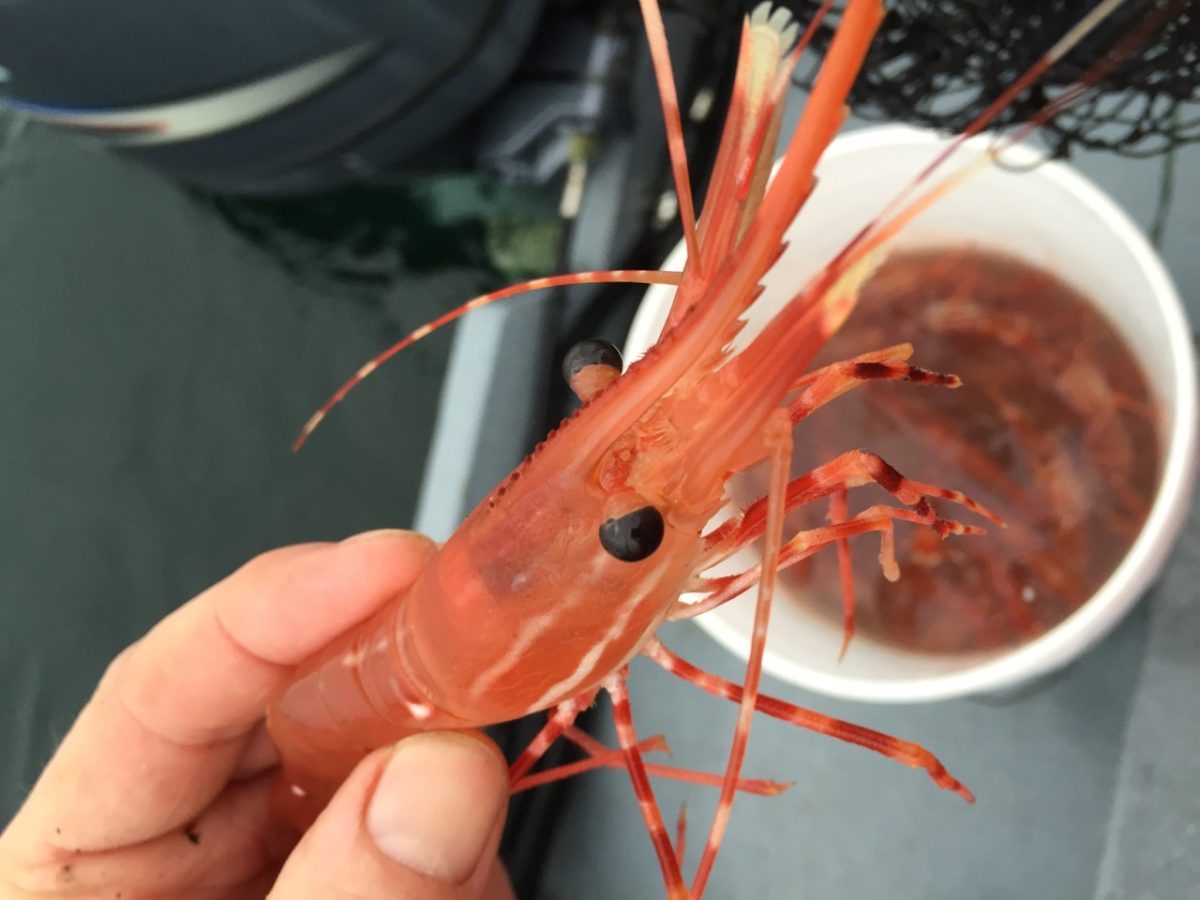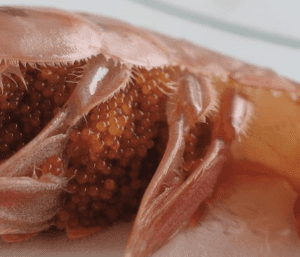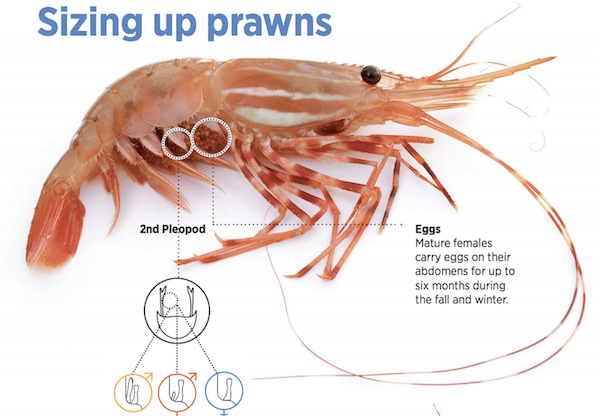
On March 29th, 2018, the DFO published a fishery notice regarding a 2018 regulation for the sports fishing of prawns as of April 1st, 2018.
The bottom line of the notice is that if you catch egg-bearing female prawns, you must release them. About half-way through the course of their 4-year lifecycle, prawns change from male to female. It’s pretty easy to see the eggs (roe), they are small round reddish balls attached to the underside of the prawn. While some may think this roe a delicacy, or a best used as garnish or presentation, it’s much better we support future stocks.
The DFO has put together a great resource page for those interested in learning more about prawns and their lifecycle.
Always be sure to check your area for closures.
Click here for the full announcement, or read below.
New Recreational Fishing Regulation April 1, 2018: to conserve prawn populations it is mandatory to release all egg-bearing female prawns.
Changes to the conditions of the BC Tidal Waters Sport Fishing Licence for 2018/2019 require that no person shall retain prawns carrying eggs, or remove eggs from the underside of prawns carrying eggs. All prawns carrying eggs externally on the underside of the tail shall be returned to the water immediately and in the manner that causes the least harm.
This new regulation was recommended by the Sport Fishing Advisory Board to help conserve prawn populations for a vibrant and sustainable recreational fishery in British Columbia.
As part of their reproductive processes prawns transition from male to female halfway through their 4-year lifecycle. Wild prawn stocks are monitored twice a year in BC to ensure a minimum number of female prawns are present in the population. The next time you set your prawn traps watch for scientific observers out on the water. They’re collecting important data that will be used to monitor the abundance of female prawns in future stock assessments. Your participation in scientific monitoring is a fundamental part of sustainable fisheries management. Please honour the spawner and fish responsibly!
Protect egg-bearing female prawns. It’s mandatory to release them!
Respect biological monitoring, catch limits and seasonal closures. Sampling occurs in the spring during the commercial fishery and again in the fall during spawning season. Trained fisheries observers are authorized to board commercial vessels to examine traps to sort and count catch by gender and maturity stage. Monitoring results may necessitate seasonal closures that apply to all fisheries. Winter is when the highest number of spawning female prawns are present. During this time recreational harvesters must respect area closures or, if areas are open, protect egg-bearing female prawns by returning them to the water in support of future stock strength.
Expect catch success to vary every season. Every season marks a new life stage with environmental conditions that influence prawn abundance. Ocean currents, larval distribution and changes in water temperature and salinity all have an impact on survival and population strength. When it comes to prawn fishing there is no such thing as “an average condition of abundance”, which means you can count on your catch success to vary season to season, area to area, year over year, throughout the Pacific region.
Fisheries & Oceans Operations Center – FN0261
March 29, 2018 at 1824
Visit the Store
$34.99
$34.99
Featured Catch

Joel Unickow halibut (Photo: Rob Frawley Lucky Strike Sportfishing Tofino)









